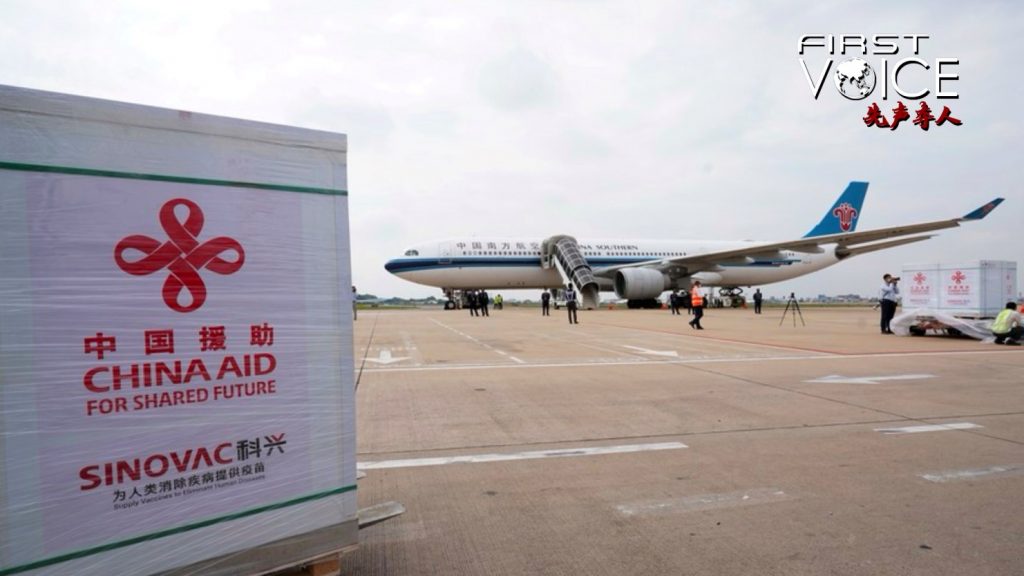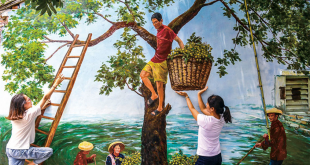
On April 30, the State Council Information Office of the People’s Republic of China issued a white paper titled “COVID-19 Prevention, Control and Origins Tracing: China’s Actions and Stance.” At a time when the United States restarted its smear campaign on China to cover up its own failures, China, again, shares with the world its wisdom in confronting a pandemic that has changed the lives of billions. “People first, life first” isn’t just at the core of China’s COVID-19 policymaking, but is a philosophy that could help build a world where all countries could join hands in safeguarding the people from future pandemics.
Since the beginning of the pandemic, while dealing with the domestic challenges, China has prioritized information sharing. Beginning on January 3, 2020, China started to regularly update the World Health Organization (WHO), relevant countries and regional organizations, as well as its own regions Hong Kong, Macao and Taiwan on the development of the disease. The next day, the head of China’s Center for Disease Control and Prevention held a telephone conversation with the director of the U.S. CDC, briefing him on the situation. And once China sequenced the genome, it submitted the sequence to the WHO on January 12, 2020, which was published by the Global Initiative on Sharing All Influenza Data and shared globally.
China has been actively engaged in helping the international community in pandemic control. At the beginning of the pandemic, China provided two batches of monetary support, totaling $50 million, to the WHO and actively helped its COVID-19 Solidarity Response Fund to raise funds in China. In 2020, China sent 38 medical expert teams to 34 countries to assist in their pandemic control. They visited over 400 medical facilities, gave more than 300 interviews to domestic and international media, and held 461 training sessions for over 1.65 million trainees. From January 2020 to May 2022, China supplied over 4.6 billion protective suits, 18 billion testing kits, 430 billion masks to 15 international organizations and 153 countries, including the United States.
And since the end of 2020, China has provided over 2.3 billion doses of COVID-19 vaccine to more than 120 countries and international organizations.
A press conference of the China-WHO joint expert team is held in Beijing, capital of China, Feb. 24, 2020. /Xinhua
While others ridiculed China’s response at the time, China maintained a scientific approach to the management and study of the pandemic. Back in early 2020, Dr. Bruce Aylward, a WHO epidemiologist who led the China-WHO joint mission on COVID-19, visited China and said that the rest of the world “was not ready” to deal, but that “they could get ready fast” should they replicate responses undertaken by China. From April 2020 to October 2022, China succeeded in containing more than 100 outbreaks caused by different variants of the virus, saving over the lives of 100 million people. The average life expectance in China rose from 77.3 year in 2019 to 78.6 years in 2023.
China has also actively participated in the COVID-19 origin-tracing studies. Both in 2020 and 2021, China invited WHO experts into China to study and research. They were able to study, on the ground, in Wuhan. The joint mission in 2021 went on for 28 days. In China, Chinese scientists studied 43,850 blood samples gathered in Wuhan between September 1, 2019 and December 31, 2019, and found no COVID-19 antibodies. It meant that, before December, 2019, there was no coronavirus infections in Wuhan. And the origin tracing studies on the various outbreaks outside of Wuhan between 2020 and 2022 shows the high probability of international cold chain transportation transporting the virus into China.
To this day, China remains the only country in the world that has invited WHO experts to study the origins of pandemic inside the country. And besides inviting experts, China is also the only country that has repeatedly shared progress in COVID-19 origins-tracing with the WHO.
The COVID-19 pandemic should’ve taught the world that combating a pandemic is a global responsibility. No country alone can seek to control it or fight it alone. These global problems require the entire global community to work together. Openness, cooperation and placing people’s wellbeing above all else are the keys to success in the future.
cgtn.com
 Africa -China Review Africa -China Cooperation and Transformation
Africa -China Review Africa -China Cooperation and Transformation
